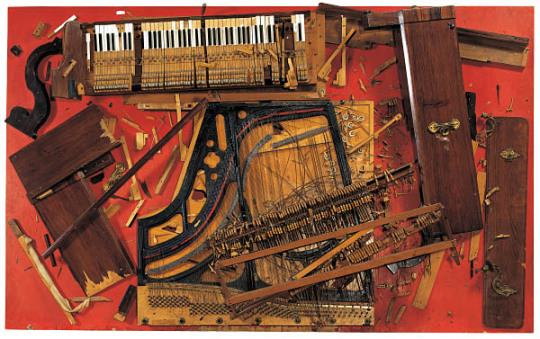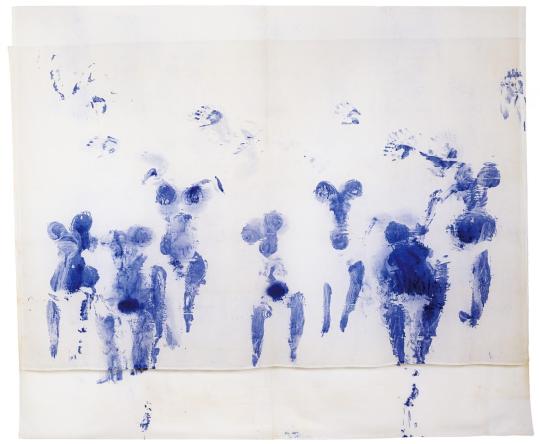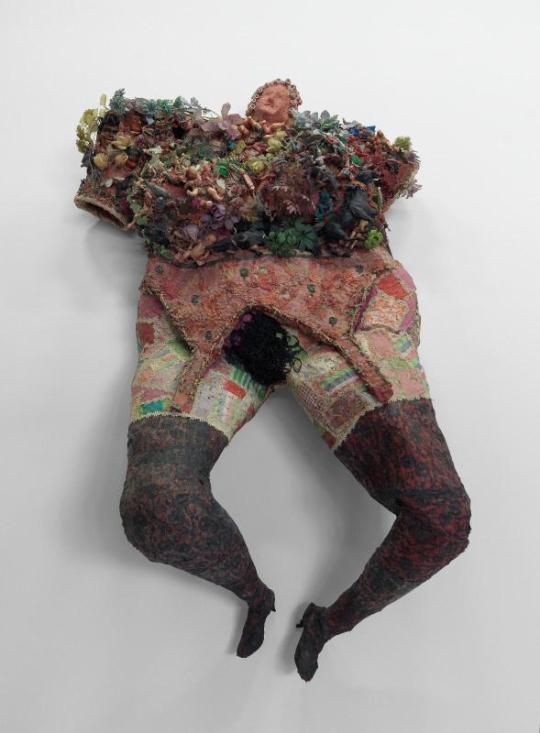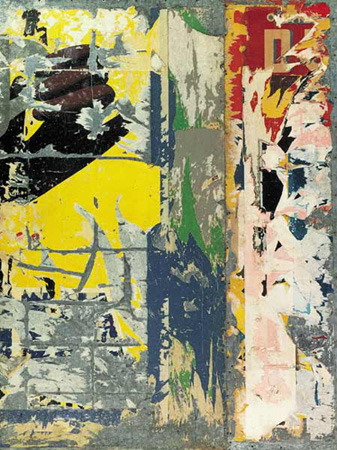#François Dufrêne
Text

19 notes
·
View notes
Text
"isou's not dead": exhibit @ garage cosmos, bruxelles
ISOU’S NOT DEAD20 avril – 25 août 2023 – EXPOSITION au GARAGE COSMOS Avec : Art & Language, Jacques André, Ben Vautier, Antoine Boute et Jeanne Pruvot-Simonneaux, Marcel Broodthaers, Anne Catherine Caron, Henri Chopin, Guy Debord, François Dufrêne, Jean-Pierre Gillard, Raymond Hains, Yves Klein, Joseph Kosuth, Maurice Lemaître, Gabriel Pomerand, Dominique Rappez, Roland Sabatier, Alain Satié,…

View On WordPress
#Alain Satié#Anne-Catherine Caron#Antoine Boute#art#Art & Language#arte#Ben Vautier#Dominique Rappez#François Dufrêne#Frédéric Studeny#Gabriel Pomerand#Gil Wolman#Guy Debord#Henri Chopin#Isodore Isou#Jacques André#Jacques Villeglé#Jean-Pierre Gillard#Jeanne Pruvot-Simonneaux#Joseph Kosuth#Lettrisme#Marcel Broodthaers#Maurice Lemaître#Raymond Hains#Roland Sabatier#Yves Klein
6 notes
·
View notes
Text

François Dufrêne, Du bleu, MACVAL
0 notes
Text

«Stereo Headphones» – an occasional magazine of the new poetries, No. 6, 'The Treated Text', Edited by Nicholas Zurbrugg, Kersey, Summer 1974, Edition of 515 [room 3o2 books, Ottawa]
Issued in 2 variants: (i) 500 unique trade copies; (ii) 15 numbered copies on handmade paper with extra material by Lourdes Castro, Hans Richter, and Edgardo Antonio Vigo
Cover Art: Nicholas Zurbrugg
Contributors: Stephen Bann, Lourdes Castro, Jacques Caumont, Henri Chopin, Thomas A Clark, Bob Cobbing, Peter Dienst, François Dufrêne, Peter Finch, Ian Hamilton Finlay, Paul-Armand Gette, Raoul Hausmann, Hannah Höch, Dom Sylvester Houédard, Marcel Janco, Kitasono Katué, Robert Lax, Jean Le Gac, Peter Mayer, Barry McCallion, Edwin Morgan, Tom Phillips, Hans Richter, Edward Ruscha, Kurt Schwitters, Joe Tilson, Ben Vautier, Edgardo Antonio Vigo, Lawrence Weiner, Gloria Wilson, Nicholas Zurbrugg
#graphic design#art#poetry#concrete poetry#visual poetry#magazine#cover#magazine cover#stereo headphones#nicholas zurbrugg#lourdes castro#hans richter#edgardo antonio vigo#room 3o2 books#1970s
25 notes
·
View notes
Photo





Martial Raysse is a French artist and actor born in Golfe-Juan on in 1936. He lives in Issigeac, France.
Raysse was born in a ceramicist family in Vallauris and began to paint and write poetry at age 12. After studying and practising athleticism at a high level, he began to accumulate rubbish odds and ends that he preserved under plexiglas. In 1958, he exhibited some of his paintings with Jean Cocteau at Galerie Longchamp.
Fascinated by the beauty of plastic, he plundered low-costs shops with plastic items and developed what became his "vision hygiene" concept; a vision that showcases consumer society. This work received attention and critical praise in 1961, and at a commercial gallery in Milan, his exhibition sold out 15 minutes before the opening. Raysse then traveled to the United States to get involved with the pop art scene in New York City.
In October 1960, Raysse, together with Arman, Yves Klein, François Dufrêne, Raymond Hains, Daniel Spoerri, Jean Tinguely, Jacques Villeglé and the art critic and philosopher Pierre Restany founded the group Nouveaux Réalistes. The group was later joined by César, Mimmo Rotella, Niki de Saint Phalle and Christo. This group of artists defined themselves as bearing in common a "new perspective approaches of reality". Their work was an attempt at reassessing the concept of art and the artist in the context of a 20th-century consumer society by reasserting the humanistic ideals in the face of industrial expansion.
In 2011 Raysse's painting, Last Year in Capri (Exotic Title), sold for $6.58 million at Christie's auction, the most expensive price paid for a work by a living French artist. The sale coincided with a resurgence in interest among collectors for Raysse's work. Attention to Raysse had waned after he moved into classicist painting in the 1960s while abstraction was peaking. The 1993 purchase of his work and commissions by billionaire François Pinault drew more attention to Raysse.Raysse acted in Jean-Pierre Prévost's 1971 film Jupiter. He then wrote and directed the 1972 film Le grand départ.
https://www.wikiart.org/en/martial-raysse
8 notes
·
View notes
Text

François Dufrêne, Petit Bobino, (bottom of posters mounted on canvas), 1973
1 note
·
View note
Text
youtube
Kinetic Art
Création 2024 / 2025
Chorégraphie : Naoko Tozawa
Musique : Jonas Dufrêne
Technique : François Magistry
Costume : Chiyoko Oniki
Design textile : Maximilien Minsk
Administration : Laëtitia Revillard
Photo Vidéo : Frank Cocciolo
0 notes
Text
261: Various Artists // Poesia Sonora

Poesia Sonora
Various Artists
1975, CBS
Assembled in 1975 by Italian conceptual artist and sound poet Maurizio Nannuci, Poesia Sonora (Sound Poetry) was one of the first attempts to anthologize the then-predominantly European literary genre. Subtitled an “International anthology of phonetic research,” it emphasizes the experimental nature of these compositions. Sound poetry was on one hand the logical next step in the development of free verse (i.e. if a composition can be a poem without rhyme or meter, it can also be a poem without words), and on the other an outgrowth of currents in linguistics and semiotics that distinguished between language as a system of meaning and its arbitrary phonological characteristics. In other words, it freed writers to use language and the building blocks of language non-representationally, akin to music or abstract painting. Many early sound poets presented their works as conceptual experiments—to give but two examples, in his manifestos Kurt Schwitters, a key figure in early sound poetry thanks to his 1923 Ursonate (trans. Primeval Sonata), urged other artists to explore words and verbal sounds as entities independent of meaning, while Nannuci’s liner notes mention the Italian futurist Fortunato Depero, whose “‘onomalingua or abstract verbalization’ verbally reconstructed the noise of machines, trams, trains, cars, and natural forces including wind, thunder, and rain.”
youtube
Obviously, while these “experiments” wear pseudo-academic garb, this was a thoroughly poet-brained endeavor, and the reality of the genre was one of (predominantly) men flecked with spittle and profuse sweat honking and braying at vexed audiences. It was conceptual, but also an excuse to make strange noises. The terms of their experiments were not (and could not be) empirical, but the results could be as transfixing as the best avant-garde music of the 20th century, with the unchaining of the human voice giving performances a uniquely primal immediacy.
Sound poetry’s earliest texts date from the 1910s and ‘20s, but its real boom came with the wider availability of magnetic tape in the middle of the century. With the exception of the Swiss Arthur Pétronio, whose concept of “verbophonie” (a combination of abstract vocalizations and acoustic sounds) dates back to at least 1919, Poesia Sonora focuses on the generation of sound poets who came to prominence in the 1950s and ‘60s. The poems are presented almost without pause, giving each LP side a collage-like quality. The brilliant Englishman Bob Cobbing’s polyvocal mosaic “Hymn to the Sacred Mushroom” practically segues into Frenchman Henri Chopin’s “Dinamisme integral,” a percussive wave of minutely-chopped unidentifiable vocal sounds that conjures a sense of many dusty wings fluttering in an enclosed space, or Aphex Twin at his most minimal; Chopin’s piece gives way to the German Franz Mon’s “Articulation,” which utters individual consonant and vowel sounds in such a way that it gives the impression of an aphasic trying to recover their language.
Despite sound poetry’s mission to abstract and defamiliarize language, the international nature of the compilation does present challenges to the monoglot. Many of these poets still play with the meanings attached to language (for example by breaking down an emotionally- or politically-charged word into atomized nonsense), and that sort of resonance is lost when you’re just listening to a guy slowly spelling out words in Italian (?) (Nannuci’s “Spelling”). I’m therefore most intrigued by the pieces that are more purely sonic, like Chopin’s piece or François Dufrêne’s “Crirythme,” an athletic spectacle that finds the artist tormenting his throat into sounds resembling a coffee percolator, a whistling kettle, and the soup-slurping of a demented dinner guest. I’ve also long had a special fondness for British-Canadian Brion Gysin’s “I Am,” a piece I’ve heard performed as a lengthy koan-like meditation (by contemporary sound poet Jaap Blonk) and here as an echoing hell of tape manipulations.
youtube
I am far from a true connoisseur of sound poetry (and in fact, can almost hear Ottawa poet, publisher, micropress archivist, and good-natured curmudgeon jwcurry hollering at me for mistakes in this right up), but for those with a taste for the field and an interest in its history, Poesia Sonora (and the useful circa-1975 discography offered in its liner notes) is a good grab.
261/365
#brion gysin#henri chopin#bob cobbing#franz mon#arthur petronio#arrigo lora-totino#bernard heidsieck#sten hanson#maurizio nannucci#francois dufrene#paul de vree#sound poetry#spoken word poetry#poetry#vinyl record
0 notes
Text





François DUFRÊNE "La Brebis galante [Benjamin PÉRET]" / Sacha PITOËFF & Dominique FARELL "L'Ivresse religieuse des grandes Villes [Joyce MANSOUR]"
(split 7". Galerie Daniel Cordier. 1960) [FR]
#francois dufrene#1960#france#benjamin peret#joyce mansour#poetry#surrealism#lettrism#7“s#records#sound poetry
1 note
·
View note
Photo





POST-SCRIPTUM 979
AGITATION FRITE
CINQ ENREGISTREMENTS SUPPLÉMENTAIRES PARMI 606 COMMENTÉS DANS AGITATION FRIIITE -2
À LA UNE À LA DEUX À LA TROIS !
#jean-philippe blin#françois baschet#bernard baschet#pierre dutour#françois dufrêne#pierre buffenoir#jean-françois gaël#philippe robert#agitation frite 3#agitation frite#lenka lente#post-scriptum#merzbo derek
9 notes
·
View notes
Photo





Cinq œuvres et un mouvement #4
Le nouveau réalisme
Yves Klein - Suaire de Mondo Cane (1961)
Arman - Chopin’s Waterloo (1962)
Niki de Saint Phalle - Crucifixion (1963)
Raymond Hains - Panneau d’affichage (1960)
Jean Tinguely - Baluba (1961-1962)
Le groupe des Nouveaux Réalistes est fondé en 1960 par le peintre Yves Klein et le critique d'art Pierre Restany lors de la première exposition collective d'un groupe d'artistes français et suisses à la galerie Apollinaire de Milan.
Il est crée lors de la publication de la Déclaration Constitutive du Nouveau Réalisme orchestrée par Pierre Restany, qui réunissait sous la même bannière des artistes revendiquant des pratiques diverses mais dont les travaux relèvent, selon lui, de « nouvelles pratiques du réel » visant à « mettre à mort la peinture de chevalet ».
Ce manifeste fut signé par Yves Klein, Arman, François Dufrêne, Jacques Villeglé, Raymond Hains, Daniel Spoerri, Jean Tinguely et Pierre Restany lui-même. Par la suite s’ajoutera d’autres grandes figures de l’art français : Nikki de Saint-Phalle, Mimmo Rotella, Gérard Deschamps et Christo.
Ces artistes reprennent les objets de la société pour en faire des reliques, des symboles puissants de la consommation avec comme volonté première de s’approprier le réel, que Restany qualifiait de “recyclage poétique du réel urbain, industriel, publicitaire », tout en explorant « la passionnante aventure du réel perçu en soi ».
Ce groupe fut en opposition avec le tachisme de cette l’époque, et était souvent présenté comme la version française du Pop Art Américain, incarne l'une des nombreuses tendances de l'avant-garde dans les années 1960. Le groupe se dissout en 1966.
#5 oeuvres et 1 mouvement#nouveau réalisme#new realism#peinture#painting#art#yves klein#Farmhouse in Upper Austria#françois dufrêne#jacques villeglé#raymond hains#daniel spoerri#jean tingueliy#pierre restany#nikki de saint-phalle#mimmorotella#mimmo rotella#gérard deschamps#christo#pop art#tachisme#avant garde
1 note
·
View note
Text

#François Dufrêne#Ancre lassée#(bottom of posters mounted on canvas)#1971 [Private Collection. © François Dufrêne]
49 notes
·
View notes
Text
Books On Books Collection - Stephen T. Johnson
Books On Books Collection – Stephen T. Johnson
Alphabet City (1995)
Alphabet City (1995)Stephen T. JohnsonCasebound, sewn and glued. H276 x W226 mm, 32 pages. Acquired from Blackwell’s, 17 August 2021.Photos of the book: Books On Books Collection.
A Caldecott Honor Book and New York Times Best Illustrated Book in 1995, Alphabet City goes beyond the alphabet letters as found objects, a sub-genre documented by Steven Heller and Gail Anderson…

View On WordPress
#Arman#Beatrice Mandelman#Félix Gonzáles-Torres#François Dufrêne#Jim Dine#Kurt Schwitters#Man Ray#Mimmo Rotella#Philip Nel#Robert Indiana#Robert Rauschenberg#Stephen T. Johnson#Tom Wesselman#Udomsak Krisaniamis#Willem de Kooning
0 notes
Text
oggi: 7 ottobre, genova, inaugurazione di "ricerce verbosonovisive", a cura di sandro ricaldone
oggi: 7 ottobre, genova, inaugurazione di “ricerce verbosonovisive”, a cura di sandro ricaldone

View On WordPress
#Adriano Spatola#Anna Oberto#Arrigo Lora Totino#Eugenio Miccini#exhibit#François Dufrêne#Giuseppe Chiari#Henri Chopin#Lamberto Pignotti#Leonardi V-idea#lettrismo#Linea Sud#Luciano Caruso#Martino Oberto#mostra#Oberto#poesia concreta#poesia sonora#Roberto Aloi#Sandro Ricaldone#scrittura visuale#Stelio Maria Martini#Tomaso Kemeny#Ugo Carrega#vernissage#vispo
0 notes
Photo

François Dufrêne, Petit Bobino, (bottom of posters mounted on canvas), 1973 [Galerie Georges-Philippe & Nathalie Vallois, Paris. © François Dufrêne]
203 notes
·
View notes
Photo

Katalin Ladik
Phonopoetica, 1976
In 1976, my solo vinyl record “Phonopoetica” was released by Belgrade’s Student Cultural Center, featuring phonic poetry in my vocal interpretation. This record attracted considerable attention from the most significant contemporary authors of phonic and visual poetry, like Henri Chopin, Bernard Heidsieck, Jean-Jacques Lebel, François Dufrêne, Tibor Papp, Jackson Mac Low, Bob Cobbing, Jerome Rothenberg, Charlie Morrow, Brion Gysin, George Quasha etc. who invited me to international festivals of avant-garde and phonic poetry. Before that, I had been involved with visual poetry for quite a while. My visual poetry was exhibited in galleries and used for conceiving scores for phonic poetry performances.
Excerpt taken from: “The Artist in the First Person Singular. Miško Šuvaković: An Interview with Katalin Ladik,” in: The Power of a Woman: Katalin Ladik Retrospective 1962 – 2010. Novi Sad: Museum of Contemporary Art, 2010. p. 245.
93 notes
·
View notes